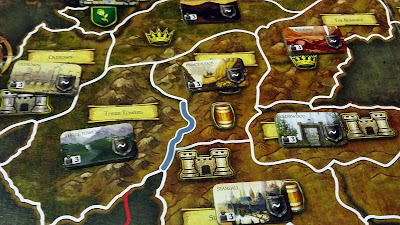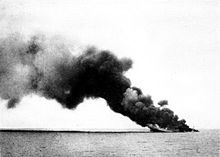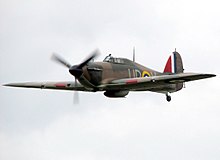Updated 7 January 2020
This was the last Update of these posts. It was unknown that the the main Boardgamer and writer for this part of the Blog was diagnosed with Cancer in late 2017. Sadly Lawrence passed away on the 4th January 2020 after a two year battle. Lawrence was a knowledgeable individual on a range of military history subjects but especially his main passion the American Civil War.
He is and will be missed by all that knew him and goes on to join The Grandfather of the club Don McIntyre, where ever they are there will be games a plenty.Trooper on the Tide
The Antivari Convoy 5th October - 8th
October 1915.
From "The Balkan Front in the Great War 1914-1917"
By T. Long.
 |
| From Boardgame Geeks. 1st edition |
|
|
 |
| From Boardgame Geeks. 2nd edition |
 |
| From Boardgame Geeks |
 |
| From Boardgame Geeks |
 |
| From Boardgame Geeks |
 |
| From Boardgame Geeks |
|
|
This was thought premature but it was
agreed that the 29th Division should
be sent via the Port of Antivari to support Serbia. If this was successful it
would be followed by the French 5e
Colonial Division. Both Divisions were of long service regulars with
experience in Colonial insurgencies, and though few the Serbian High Command,
welcomed any support. If the reinforcements were successful then further
operations would planned.
The KUK Navy was also a factor in the
strategy. From being an ageing coastal fleet it had been modernized, with an
ambitious building scheme starting in 1910. Six Dreadnoughts had been launched
as well as three semi Dreadnoughts of the Radetsky Class. Impressed by the
teachings of the French Jeunesse Ecole that a torpedo boat could sink a Capital
ship, Destroyers, Torpedo Boats and Light Cruisers had been launched as well. The
navy was lead by Admiral Augustus Mack, of a distinguished military family.
Born in 1878, he had gone to sea young and was one of the few of the KUK Naval
officers to see action, albeit on land in the Boxer Rebellion. He was
considered young to command a fleet, but the Navy was full of younger sons of
the Nobility interested in technology and sons of the middle class seeking
quicker promotion than they would get in the Army.
The Austrians soon learned of the
upcoming operation-through out the War, both sides learnt there were few
secrets in the Balkans! A large Fleet was gathered at Valletta consisting of 4
Duncan Class, 2 Queen Class and 2 London class pre-dreadnoughts, 4 Armoured Cruisers
as well 4 Battle Cruisers, the glamour ships of the Royal Navy. Faster than the
stronger Dreadnoughts, said the admirers. Egg shells armed with hammers said
the critics.
There were only 6 destroyers, as well
as 10 transports. An even larger French fleet assembled at Corfu, Greek protests
being ignored. Two powerful Courbet class dreadnoughts, 6 Danton class 3
Liberte class, 2 Condoret class and 2 Republic class pre-dreadnoughts as well 10
armoured cruisers were gathered together, as well as 11 destroyers. The plan
for the Allies was that the French would seek battle, and the British would
proceed to Antivari. The British battle cruisers will act as a scouting force
in coordination with the French, using their superior speed.
The Austrian plan was that a picket
line of submarines would attack the Allied fleet. The Fleet would be divided,
with some of the older Erzherzog class with light ships in support would block
any attempt at landing in Antivari. The More modern Ships would seek battle.
On the afternoon of the 5th of October
a World first happened: the KUK B7 Naval airship spotted and reported a naval
enemy task force to another friendly warship. The 4 Battle Cruisers, HMS New Zealand, Indomitable, Indefatigable
and Inflexible with 3 destroyers were
spotted heading NNW, 40 miles from Bari. The British fleet responded by another
first, by shooting down the airship by a lucky shot.
The main Austrian Fleet of 6
dreadnoughts, 3 semi dreadnoughts, 4 light cruisers, 17 destroyers and 16
torpedo boats intercepted the British Battle Cruisers. Boldly the British Battle
Cruisers faced their foes for 20 minutes before turning away. A light cruiser
and a destroyer leader were sunk and the dreadnought Franz Joseph was roughly handled. The Austrians eventually got the
range damaging the Indefatigable, causing her to lag behind her consorts. She
was sunk by a torpedo attack, but by then the Kuk fleet had been led into the
range of the much larger French fleet.
Two columns of 11 Pre-dreadnoughts and
Armoured Cruisers, each lead by a Dreadnought and flanked by 11 Destroyers
loomed out of the twilight. The battle cruisers retired as the two fleets
slugged it out. Though neither side had training for it, both sides refused to
break off at night. Mack hoped that his destroyers would prove useful in the
attack at close range, but the light craft were not as effective as he hoped.
Bravely the light cruisers escorted their smaller ships, and paid the price.
All light cruisers were sunk as were seven destroyers and five torpedo boats.
That is not to say their efforts were totally fruitless. The dreadnought Courbet was left dead in the water and
on fire from torpedo hits and only heroic efforts of her crew saved her. The
pre dreadnought Diderot suffered
flooding and fire from a torpedo hit. Both ships were in the shipyards for
months afterwards. French destroyers were not idle, with the dreadnought Prinz Eugene badly damaged by two
torpedo hits. The French armoured cruisers proved their worth by accounting for
most of the enemy light craft. A lucky salvo from the Vergiaud sunk the semi dreadnought Franz Ferdinand with a massive explosion, the only capital ship
lost by either side all night. The night meant the French could not use all
their numbers but both sides was amazed of the amount of damage
Modern ships could both inflict and
take. The Kuk fleet broke off the battle before dawn, and Admiral Nathan, a old
Breton Sea Dog decide that he needed to re order his battered fleet. The
Dreadnought Jean Bart was badly
damaged, as well as the Courbet. Five
destroyers were also sunk and four pre-dreadnoughts suffered major damage. Five
of his armoured cruisers were detailed to escort his damaged ships south, while
the rest of the fleet resumed its' search. Admiral Mack daringly divided his
fleet with the two undamaged semi dreadnoughts and the dreadnought Viribus Unis and three destroyers going
to the aid of the blocking Fleet, and the damaged ships heading back to Pola.
The Blocking force had actually
avoided any combat, and was on its’ way to Antivari. It consisted of three of
the old Erzherzog class of pre dreadnoughts, five destroyers’ two light
cruisers and eight torpedo boats. The three remaining battle cruisers leading
the main French fleet came across the Austrian Fleet sailing east to re enforce
the blocking fleet. The Battle Cruisers came on aggressively, hoping by a lucky
shot to slow down one of the enemy ships.
The Austrian Fleet, seeing a rerun of
the day before, turned north and fled. There was a classic sea chase for two
hours with salvos at long range. The French Fleet could not get in range and
the battle cruisers traded shots with the Austrians. Both sides took major
damage and eventually two of the battle cruisers had to drop out of the chase.
Sadly the fire eating Admiral, Sir Gregory Heard had to admit that the New Zealand alone could not catch the
enemy fleet, and broke off the chase. No re-enforcements would be coming to the
blocking fleet.
The British Fleet escorting the
transports were on course the only problem being the loss the Armoured Cruiser Defence to what was believed to be a
submarine but must have been a mine. The Austrian submarines never saw anything
over the three days. When the British Fleet under Sir Thomas Stephen arrived on
the 8th they found their way barred by the much smaller Austrian Fleet. The
British Fleet had 8 Predreadnoughts, 3 Armoured Cruisers, 3 Destroyers and 10 Transports.
Gallantly the Austrian light ships
flung themselves at the British escorts and the old Austrian capital ships
attacked their counterparts. But the odds were too heavy. Both light cruisers
were sunk as were four destroyers and four torpedo boats. One Transport holding
the divisions’ artillery was sunk, as was a destroyer. The Predreadnought Russel suffered significant damage, and
the Duncan and Cornwallis both suffered slight damage. But after two hours, the
three old Austrian Capital ships were sunk, and the surviving light ships
escaped.
Lacking light ships to pursue,
Admiral Stephen preceded in triumph to Antivari. Thus an Allied victory was
celebrated when one was needed at this stage of the war. The Austrians lost
four capital ships to two Allied, six light cruisers, twelve destroyers and ten
torpedo boats. Several French ships were in Dry dock for months, as were the
three damaged Battle cruisers. To his surprise Admiral Mack and the fleet
became popular heroes. Showing a surprising energy and vigour, the capital
ships were repaired and using the steel from the old laid up ships the light
ships were replaced over a year. But it was not for another year (9 July 1916
Battle of Peligosa) that Capital Ships came out again.
That did not mean the naval war was
over. The Austrian Submarine Branch developed into a force that inflicted some
stinging blows, bold raids by the Light Craft kept Allied Navies on alert, and
a lack of allied Light Craft till 1916 kept the Allies on the defensive. But
never again were the KUK fleet in the position to challenge Allied Convoys to
the Serbian Front-harass and annoy certainly.
The Battle of Antivari was one the
Kuk Navy had to win. It failed. Nor was the Austrian navy present at the
Storming of Cattaro by the British Imperial and French forces on the 25th April
1915. By keeping Serbia in the war, keeping Bulgaria neutral the Antivari Ferry,
as the Royal Navy called it, was vital.
The Danube Offensive in July 1916 and
its advances along with the successful Brusilov Offensive in June of 1916 were
blows the Austrians could barely stand.
Kaiser Karl’s speech from the Throne on
the 25th October 1916 pleading for loyalty and offering concessions was showing
that cracks in the Empire could no longer be ignored. Admiral Mack and his
Naval Column were among the last defenders of the throne in Vienna, and while
the Army broke up, the Navy remained Kaiser true, till the Kaisers abdication
on the 5th April. The Antivari convoy was a vital link in the chain of events
that lead to the end of the Empire, and the Defeat of Germany.































































